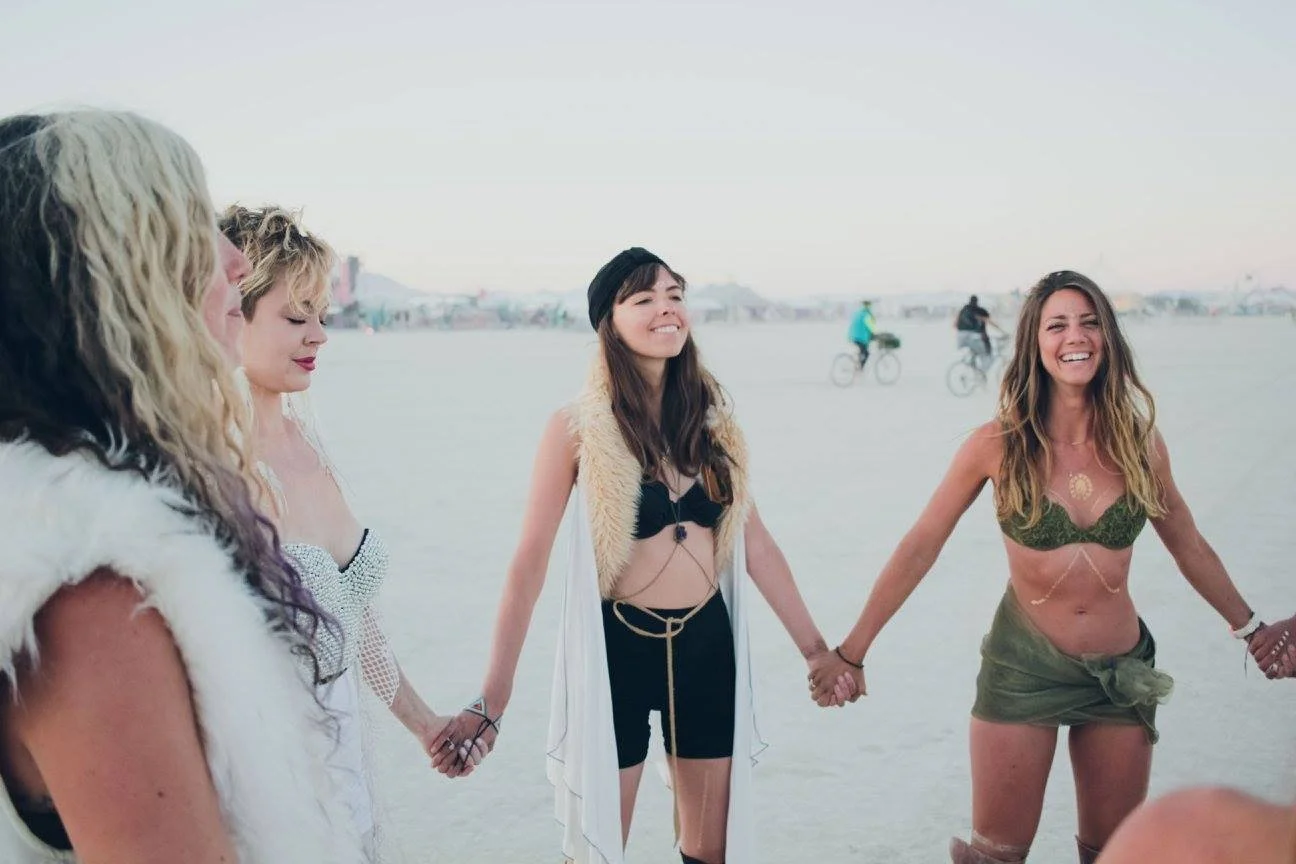Is Burning Man Right For You?
I’ve been to Burning Man twice—first in 2010, then again in 2015. Each time I went, I witnessed something truly extraordinary: the scale of art, the wild beauty of the gifting economy, the raw honesty at the Temple, and the deep sense of possibility that emerges when people gather to create from nothing in the middle of the Nevada desert.
In 2010, around 51,500 people attended. By 2015, the number had grown to about 70,000. Fast forward to 2025, and the gathering now draws around 80,000 participants annually.
With that growth has come a change in energy—more production, more infrastructure, more money required to participate.
And more than that, I noticed how much I had changed.
Realizing My Sensitivity
By the time I returned in 2015, I realized how sensitive I had become. The loud music that pulsed all night long, the constant stimulation, the drug use—it was no longer nourishing for me. I remember standing beneath the stars and thinking, I’d rather be in a quiet forest, breathing into my body, practicing yoga, and listening to the wind.
Burning Man amplified the truth I had been slowly discovering: I thrive in spaces of calm, subtlety, and sacred rhythm. While I could still appreciate the artistic wonder and spiritual intent behind much of what I experienced, I could also feel where it was no longer aligned with my nervous system, my energy body, or my devotional path.
The Elements and Extremes
Burning Man isn’t for the faint of heart. The weather is its own kind of initiation—scorching heat by day, bone-chilling cold at night, and skin so dry it cracks without constant hydration and care. And then sometimes, it rains, creating a thick, sticky mud that can leave you stranded in place for hours.
These extremes are part of the experience. For some, they’re invigorating. For others—especially highly sensitive people—they can be overwhelming, even destabilizing. If you identify as an HSP, an empath, or someone who needs intentional rest and slowness, Burning Man may not feel like home.
The Cost of Creation
Let’s also talk about the financial cost. The average person spends between $1,500 and $3,000 to attend. Tickets, transportation, food, infrastructure, costumes, camp dues—it adds up quickly. While building a temporary city in the desert is a feat of collective creativity, it’s worth reflecting: How else might we use that money to bring healing, connection, and creativity into the world?
What if we created sanctuaries in nature, built intentional communities, or funded women’s circles and land-based retreats with that same devotion?
Honoring the Magic—and Choosing a Simpler Path
I still hold deep respect for what Burning Man represents. The Temple is one of the most powerful public grieving spaces I’ve ever witnessed. The art, the ceremonies, the teachers who come to share wisdom—it all matters. It’s a space where imagination is allowed to lead, and that alone is worth honoring.
But the truth I came to is this:
Burning Man doesn’t replace the beauty of a true and simple spiritual practice.
There is a holiness in daily devotion.
In slowing down.
In waking with the sun.
In quiet prayer beneath trees.
In placing your bare feet on the Earth.
In sisterhood. In stillness. In ceremony held by candlelight instead of chaos.
Trusting Your Truth
Burning Man is not inherently good or bad. It’s a mirror, a container, a massive altar for self-expression and transformation. But you are allowed to choose what kind of altar best serves your soul.
If you find yourself craving more depth, softness, and silence—listen. If your body tightens at the thought of overstimulation, loudness, or all-night parties—listen. You don’t have to go just because it’s “cool.” You don’t have to keep up. Your path is sacred, even if it looks quieter now.
For those who still feel called to the playa, may you go with reverence. And for those who stay behind to tend the fire within—may you know your devotion is no less radiant.
With love,
Meredith






